| Botanical Name |
|
| Family |
Aloeaceae - The aloe family. |
| Pronunciation |
|
| Common Name(s) |
English: African aloe; Uitenhage aloe
Afrikaans: Uitenhaag-aalwyn
|
| Plant Group |
- Succulent A plant having fleshy stems or leaves often adapted to dry conditions.
|
| Plant Size |
- Very large
| Tree | Over 25m |
| Shrub | Over 4m |
| Perennial/ground cover | Over 1m |
| Bulb | Over 1.2m |
| Succulent | 1.5m to 2m |
|
| Position |
- Sun The area is in full sun for all or most of the day, all year round.
|
| General Information |
- Drought Tolerance: High The plant is well adapted to arid conditions; it can survive long periods of drought and high temperatures without extra water.
- Evergreen Plants that have leaves all year round.
- Frost: Half-hardy The plant is able to survive low temperatures and some frost but requires protection against severe frost.
- Roots Non-invasive Safe to plant near pools, paving, walls or buildings.
- Salt spray tolerant A plant with specific adaptations enabling it to grow in a saline environment.
- Sand tolerant Plants adapted to survive in nutrient poor, very sandy soils.
- Water Wise Plant species originating from low rainfall regions that require less water to survive and thrive than other plant species.
- Wind Tolerant Plants able to withstand the effect of strong winds.
|
| Specific Information |
Aloe africana is a single stemmed aloe of 2 - 4 meters with a rosette of dull to greyish-green leaves with reddish spines along the edges. The out-curved flowers are exclusive to Aloe africana, making it easy to differentiate it from other similar members of the aloe family. They produce one to four flower stems. These aloes prefer sun and windy conditions.
It grows well in Western Cape gardens as long as it gets some water in summer.
|
| Ad Break |
|
| Flowers |
| Description |
out-curved tubular flowers on erect spikes
|
| Season |
- Winter Plants will seldom bloom for the entire season as given in the list, but should flower during a period within these parameters.
|
| Colour |
|
| Growth Rate |
- Slow Specifying growth rate can be very misleading as there is considerable variation of growth rate depending on type and species of plant, available water, supplementary feeding, mulching and general care, as well as the plants suitability and adaptability to the garden environment.
|
| Plant Uses |
- Accent or Focal Point A plant used to attract the attention because of its colour or form.
- Attracts bees, butterflies or other insects This plant attracts insects which can be food for birds or other creatures in your garden.
- Attracts Birds This plant will attract birds.
- Boundary A plant useful for planting around the edges of the property to form a green or colourful backdrop, an impenetrable hedge, to hide walls or create privacy.
- Container Trees, shrubs and ornamental species that can adapt to growing in a restricted environment.
- Rock Garden An area constructed of larger rocks, arranged naturally, to emphasise the use of stones as a main element. Generally plants used do not need a lot of care.
- Suitable for coastal gardens Plants adapted to dry, sandy soil, forceful wind, limited rainfall and intense sunlight.
- Suitable for seaside gardens Plants that will survive the hostile environment of harsh salty winds, dry sandy soil, irregular rainfall and heat found in seaside gardens.
- Wild Garden An indigenous garden planted for the benefit of wildlife and birds. Provides food, water, a variety of mini-biomes and no poisonous chemicals are used.
|
| Distribution and Habitat |
in the Eastern Cape, from the Gamtoos River to Port Alfred and inland to Fort Brown and along the Great Fish River Valley, in Albany thicket, fynbos and dense coastal and valley thicket, in sandy soils
|
| Planting Suggestions |
Aloe africana will grow in most soils as long as they are well drained. Don't plant aloes too deeply or they will rot. Over-watering can cause fungal infections.
|
| Medicinal Uses |
|
| Ad Break |
|


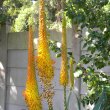
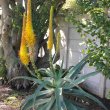
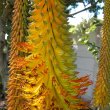
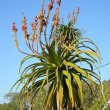
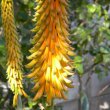
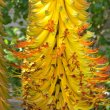


Discuss this plant
Share knowledge, ask a question or give an experience.